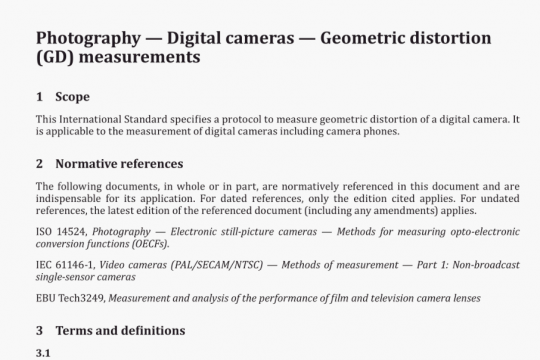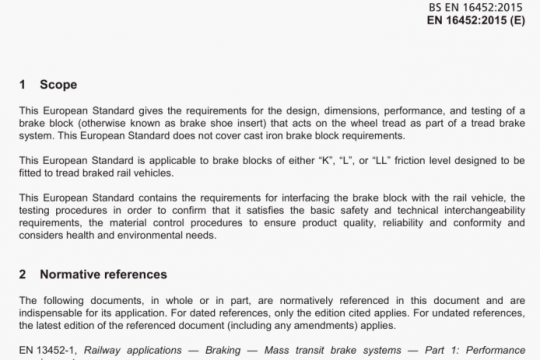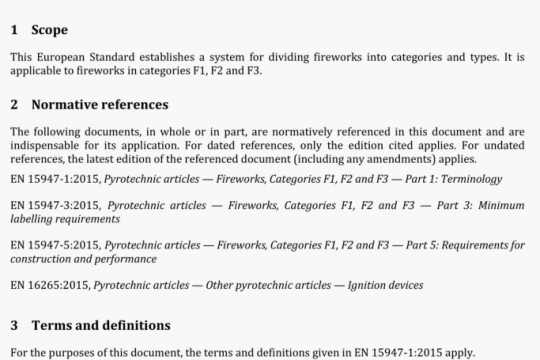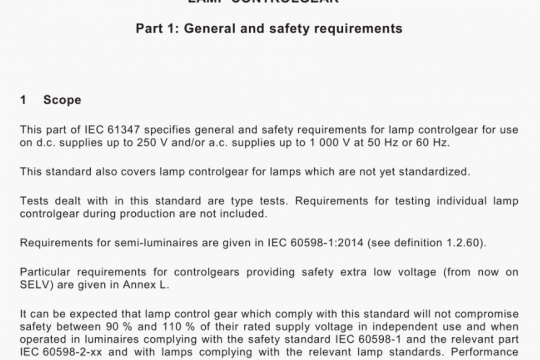BS EN 1849-2:2019 pdf free
BS EN 1849-2:2019 pdf free.Flexible sheets for waterproofing – Determination of thickness and mass per unit area – Part 2: Plastics and rubber sheets for roof waterproofing.
5 Determination of thickness
5.1 Principle
The effective thickness is determined by a mechanical measuring device unless there is a hindrance. In this case, an optical measuring device shall be used. The hindrance means that the difference between effective thickness and overall thickness is greater than or equal to 0,15 mm and/or that the weight of the backing is greater than or equal to 80 g/m2.
The overall thickness is determined by a mechanical measuring device unless there is a hindrance. In this case, an optical measuring device shall be used. The hindrance means that the measuring surfaces are disabled from a good contact with the 2 outer surfaces of the sheet.
5.2 Apparatus
5.2.1 Mechanical measuring device
Measuring device, capable of indicating the thickness to an accuracy of 0,01 mm. The measuring surfaces shall be planar and the measuring head has a diameter of(10 ± 0,05) mm including rounded edges exerting a pressure of (20 ± 10) kPa on the sheet surface.
5.2.2 Optical measuring device
Measuring device, capable of indicating the thickness to an accuracy of 0.01 mm. The reproducibility for the whole optical measuring device (microscope, monitor, measuring software, …) is smaller than 0,01 mm. The magnification of the optical measuring device is recommended to be greater or equal than 30.
5.3 Test specimens
The test specimens shall be square or circular in form, and have an area of(10 000 ± 100) mm2. Cut from the sheet n test specimens evenly divided over the width b of the sheet, the outer specimens (100 ± 10) mm from the edges.
For the optical measurement a small specimen shall be cut with a razor-sharp knife from each specimen. This small specimen should not be longer than 15 mm and Is cut from the middle of the test specimen. The cut should be even perpendicular to the surface 900 ± 100. Use a template and cutting from the top side of the membrane is recommended.
The minimum number of test specimens is 2. The maximum distance between 2 test specimens is 1 000 mm.
5.4 Procedure
Condition the sample for at least 2 h at (23 ± 2) °C and (50 ± 5) % relative humidity immediately before measuring.
Ensure that the sample and the faces of the measuring device are free from contamination for example dust.
Check if the measuring device is calibrated and working properly.
Determine if the mechanical measurement applies. In cause of doubt an indicative optical measurement will be done.
Record all relevant thicknesses of the sheet once per test specimen to 001 mm. Calculation of the mean value and standard deviation is based on the readings of all test specimens.
5.4.1 Mechanical measurement
Check the zero point of the measuring device before each measurement.
When determining the thickness, lower the measuring head gently to avoid deforming the material.BS EN 1849-2 pdf download.




